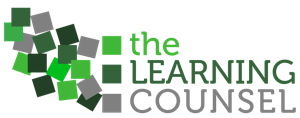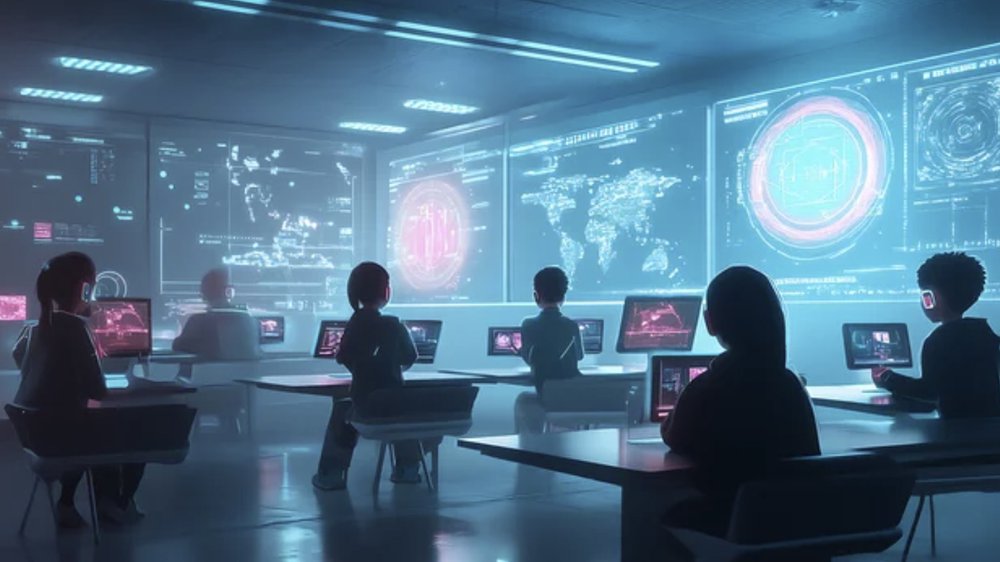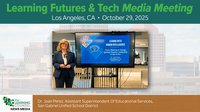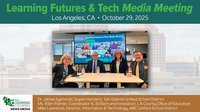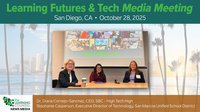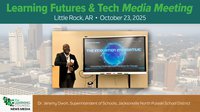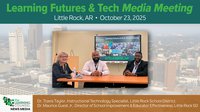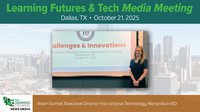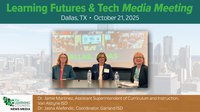For over a century, schooling has been organized around the industrial model of whole-group instruction. One teacher, one classroom, one lesson delivered to 25 or more students at the same pace. While efficient for managing large numbers, this model is not aligned with how humans actually learn. Research and classroom experience both show that for 70–80% of learners, cognition and deep knowledge formation do not occur effectively in whole-group settings.
The result is predictable: disengagement, shallow retention, absenteeism, and inequity.
The truth is, whole-group instruction only reliably serves a minority of learners, while the rest are either left behind or forced to wait. Even worse, mixed-ability classrooms taught in lockstep can actively harm learning outcomes: advanced students become disengaged and underchallenged, while those who need more time are pushed forward prematurely, cementing gaps. Studies in cognitive science and educational psychology repeatedly show that human working memory has limited capacity (Sweller’s Cognitive Load Theory), and instruction delivered to a broad group often overshoots the readiness level for most individuals. Similarly, Benjamin Bloom’s work on Mastery Learning demonstrated that one-on-one tutoring produced achievement gains two standard deviations above whole-class instruction—evidence that group pacing is the weakest form of delivery for deep learning.
Core Realities of Human Learning
Understanding the true paradigm of learning requires us to revisit what cognitive science, anthropology, and practice tell us:
- Learning is individual first, social second. Each brain processes knowledge uniquely, constructing meaning through prior experience, readiness, and interest.
- Learning requires variable time. Some students master a concept quickly; others need extended cycles. Locking all students to the same pace creates artificial failure. Bloom himself estimated that mastery-based pacing could nearly eliminate achievement gaps that are widened by uniform pacing.
- Attention is the true currency. Engagement, curiosity, and relevance are prerequisites to lasting memory. Without them, instruction evaporates. Neuroscience confirms that the brain prioritizes emotionally salient, personally meaningful information for encoding.
- Cognition is built by doing. Practice, creation, problem-solving, and reflection—not passive listening—consolidate knowledge. John Hattie’s meta-analyses highlight that active strategies like feedback, spaced practice, and formative assessment have far greater impact than lecture-based teaching.
- Humans are social pattern-seekers. Interaction, dialogue, and mentorship matter greatly, but only after personal grounding has occurred. If introduced too early in whole-group contexts, this leads to mimicry rather than authentic thought.
Toward a System That Works: The Paradigm Shift
A paradigm shift can be enabled with AI for the first time, managing learning at the student level plus time and motion of the social construct and live teaching logistics.
A new paradigm can replace whole-group as the default mode of instruction.
The answer lies in individualized knowledge paths coupled with logistics AI to manage dynamic social intersections.
Here is what research now shows is a system that would work, currently called “PathFlex Learning:”
1. Personalized Knowledge Paths
Learners progress through flexible, standards-linked sequences at their own pace. This is not pace-within-a-regularly-scheduled-class, but entirely independent. It may be also grade-divergent, a course of learning assigned that is not based on the age of the student. Adaptive digital resources provide content, while teachers step in when human guidance is most needed. Logistics can still manage some lecture-style, discussion-style, small-group hands-on projects, labs, and any normal method, just separated from independent analytical study of materials. AI chatbots can manage a lot of the question-and-answer.
2. Dynamic Time AI Scheduling is the Pivot
A new AI that enables auto-cohorting: grouping students dynamically at the point they need the same live social interaction. Teachers meet with these clusters in small, targeted sessions rather than broadcasting to an entire class or trying to keep an entire class together. Each point happens on-demand as cohorts arrive to the point, with each point happening multiple times across time due to differing student paces.
3. Teachers as Mentors and Orchestrators
Teachers shift from being content deliverers to being largely coaches, diagnosticians, and project mentors—roles that are deeply human and irreplaceable.
4. Balanced Learning Modalities
Courses of learning built with several types of AI watching the whole of the learning can ensure the ideal method balance:
- Independent exploration & practice (50–60%): reading, watching, problem-solving.
- Small-group intersections (20–30%): guided instruction, scaffolding, Socratic dialogue.
- Whole-group moments (10–20%): cultural rituals, shared launches, celebrations—not the core mode of learning.
- Adjustments by subject and topic as well as cognitive level, native language, culture, and more can be “liquid,” managed on-the-fly without human teachers having to intercede for every adjustment.
5. Performance-Based Progression
Advancement is based on mastery, not seat time. Mastery does not have to mean perfect. A bit of wiggle room for institutions can be part of the AI construct so that perfection is not the bottleneck to completed courses, since research indicates overly strenuous requirements defeat learning interest for many. Demonstrations of understanding through projects, portfolios, or simulations replace arbitrary timelines. AI can “co-pilot” resources used using Recommendations Engine AI.
6. Cultural Belonging Layer
Learning thrives in environments of trust and belonging. Schools must create shared rituals and identities while decoupling culture from rigid pacing.
7. Matrixed Human Teaching Resources Layer
Teacher specialization can move further along the continuum of expertise types in every subject and add more subjects because AI logistics can layer in the best in human teaching resource for the right students at the right time despite geo-distance. This is not to say all teaching would be remote, but for similar students a distance away to gain the equity of specialists despite being outside the normal campus area, even across whole States or the nation.
The New Paradigm in One Sentence
True human learning = individually paced knowledge construction plus dynamic social intersections and intersection with live teaching, with time as the variable.
The factory model of education was never designed for cognition equity; it was designed for efficiency. This model is called Pathflex, and uses AI logistics.
Today, with the help of AI, adaptive scheduling, and a deeper understanding of learning science, we can finally design schooling that mirrors how humans actually learn. The challenge is not whether change is possible—it is whether we are willing to break from tradition to embrace the true human learning paradigm.
It’s not an appeal to more progressive forms that throw out everything schools now cling to as workable, nor slavishness to technology to want, at long last, a model built intentionally around researched human qualities.
It’s a shift to be human now that AI is present. A seeming paradox, but a sensible truth.
###
